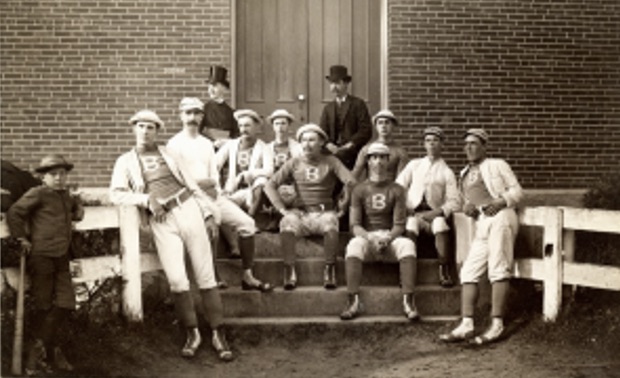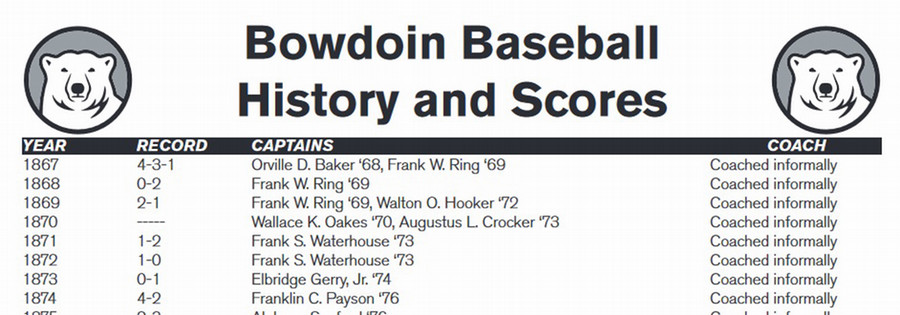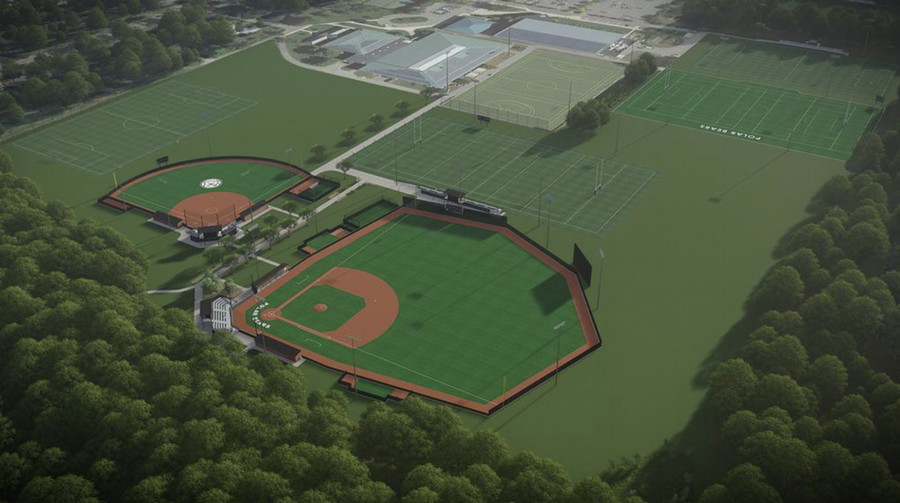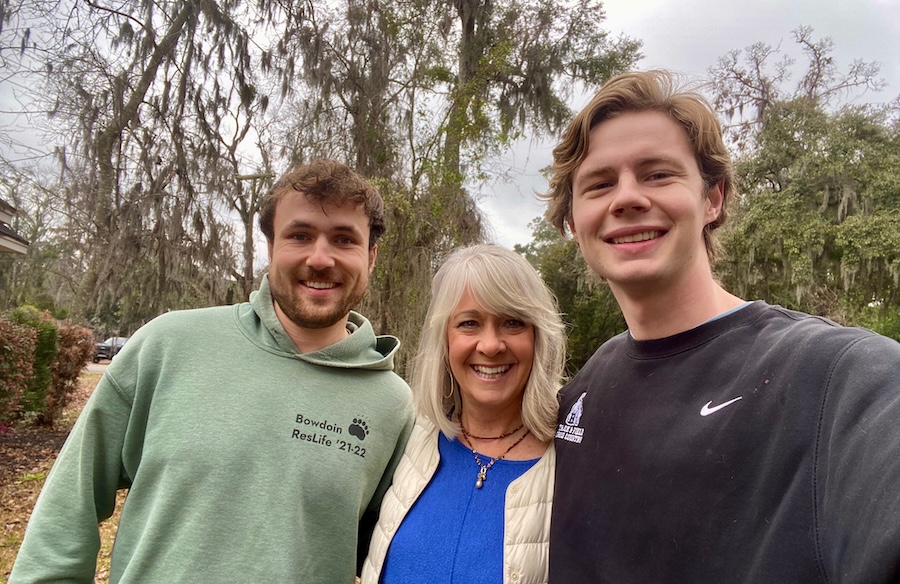Pickard Field Renovations Herald Next Chapter in 160-Year Old Bowdoin Sporting Tradition
By Tom PorterIt’s probably safe to assume that baseball pitcher Edwin Emery and his teammates from the Class of 1861 would be lost for words if they were able to witness the changes currently underway on Bowdoin’s athletic field complex.

They surely would be dazzled by the multipurpose artificial turf field, awed by the large stormwater treatment system, nonplussed by the LED sports lighting, and wowed by the synthetic turf bullpens and batting cages—all features of the major renovations being done at Pickard Field over the summer, due to be completed by the start of the fall semester.
These long-awaited improvements, which will benefit varsity, club, and intramural athletic teams, are the latest chapter in a sporting tradition that goes back to 1860, when the first competitive baseball game took place at Bowdoin College, involving Emery, who was a pitcher, and some of his fellow students.
Baseball officially came to Bowdoin on September 29 of that year, according to Secretary of Development and College Relations John Cross, who is also the unofficial Bowdoin historian. “The nines from the junior and senior classes played the first recorded game on the Delta, a field now occupied by Sills Hall, Smith Auditorium, Cleaveland Hall, Druckenmiller Hall, the Hatch Science Library, and Kanbar Hall,” said Cross. “The juniors won that game 23 to 13.”
The following month the seniors played a town team, the Sunrise Club, at the Topsham Fairgrounds in a close game, won by the Sunrise Club 46 to 42. The bat used in that game was crafted by local hardware store owner John Furbish, brother of noted botanical illustrator Kate Furbish. The item, which is likely the oldest bat to be used in a recorded game, said Cross, is now the property of the Pejepscot History Center in Brunswick.



Baseball was somewhat different in those days, explained Cross, played according to either the “New York” or the “New England” version of the 1860 rules. “These rules called for the hurler (pitcher) to deliver the ball in an underhand toss to the place where the striker (batter) requested it. Foul balls were not called strikes, and balls were not called at all. A striker was dead (out) after three swings and misses or if a batted ball was caught in the air or on one bounce in fair or foul territory. The ball was furnished by the challenging team and became the property of the winner. No gloves were used, and the bat could be no thicker than 2 ½” in diameter.” (Rule changes in 1880 brought baseball closer to the modern game, he added.)

The sport may have arrived at Bowdoin in 1860, but it was to be a few more years before the College played its first full season. This was in 1867, when Orville D. Baker ’68 and Frank W. Ring ’69 captained the Polar Bears to a respectable record of 4-3-1. Thus began a century and a half of commitment to America’s national pastime at Bowdoin College, where the northern New England climate presents its own challenges when it comes to playing a spring sport best undertaken in warm and dry conditions.
Over the years, seven Bowdoin alumni have played in Major League Baseball—starting in 1898 with Pop Williams (Class of 1896)—while four players have been selected in the Major League Baseball draft since 1966. In recent years, the Polar Bears have advanced to two NCAA tournaments in 2006 and 2012, as well as nine NESCAC tournaments. Since 2004 the baseball program has averaged an impressive twenty wins per season, with the exception of the COVID-shortened 2020 campaign.
Looking ahead to the next chapter for baseball and other team sports at Bowdoin, renovations at Pickard Field are going well, said Director of Capital Projects John Simoneau. “Massive amounts of material have been moved by the contractor in preparation for the construction of the new artificial turf fields and the installation of the necessary lighting,” he said. In all, he explained, there will be three new multipurpose artificial turf fields, to be used by both the baseball and softball teams. There are also two new natural grass fields for rugby and soccer practice, while the existing women's natural grass soccer field will have added lights.

"This is a major transformation of the athletic field complex, solving long-standing problems with snow and ice at the start of spring athletic seasons,” Simoneau added. “This project has a very tight schedule because it is Bowdoin’s primary athletics facility for many teams.” The aim, he explained, is for a seamless transition to the next round of athletic activities without any team missing a season at this new complex—a laudable goal, and certainly one in keeping with the sixteen decades or so of sporting tradition at the College.



